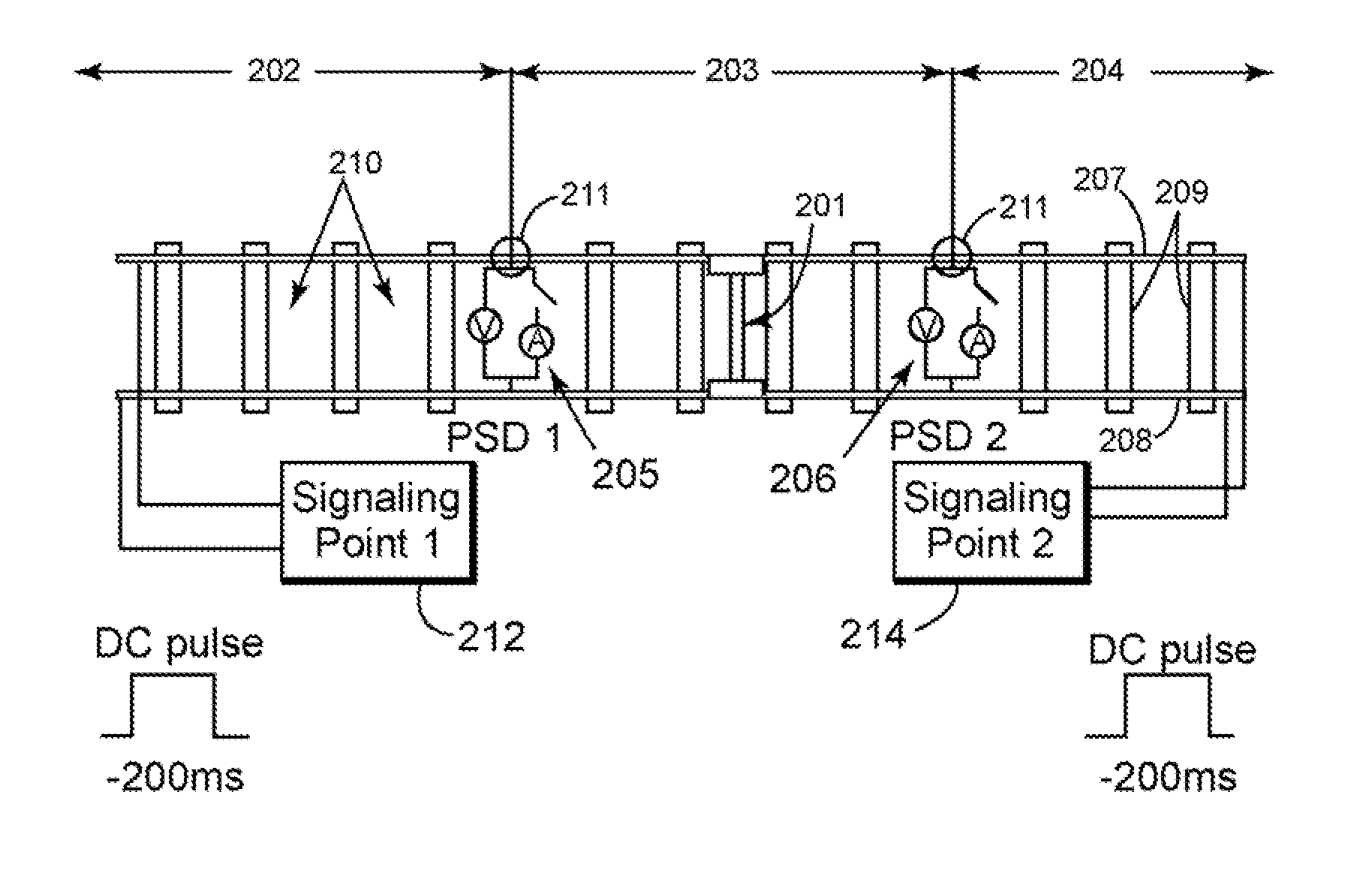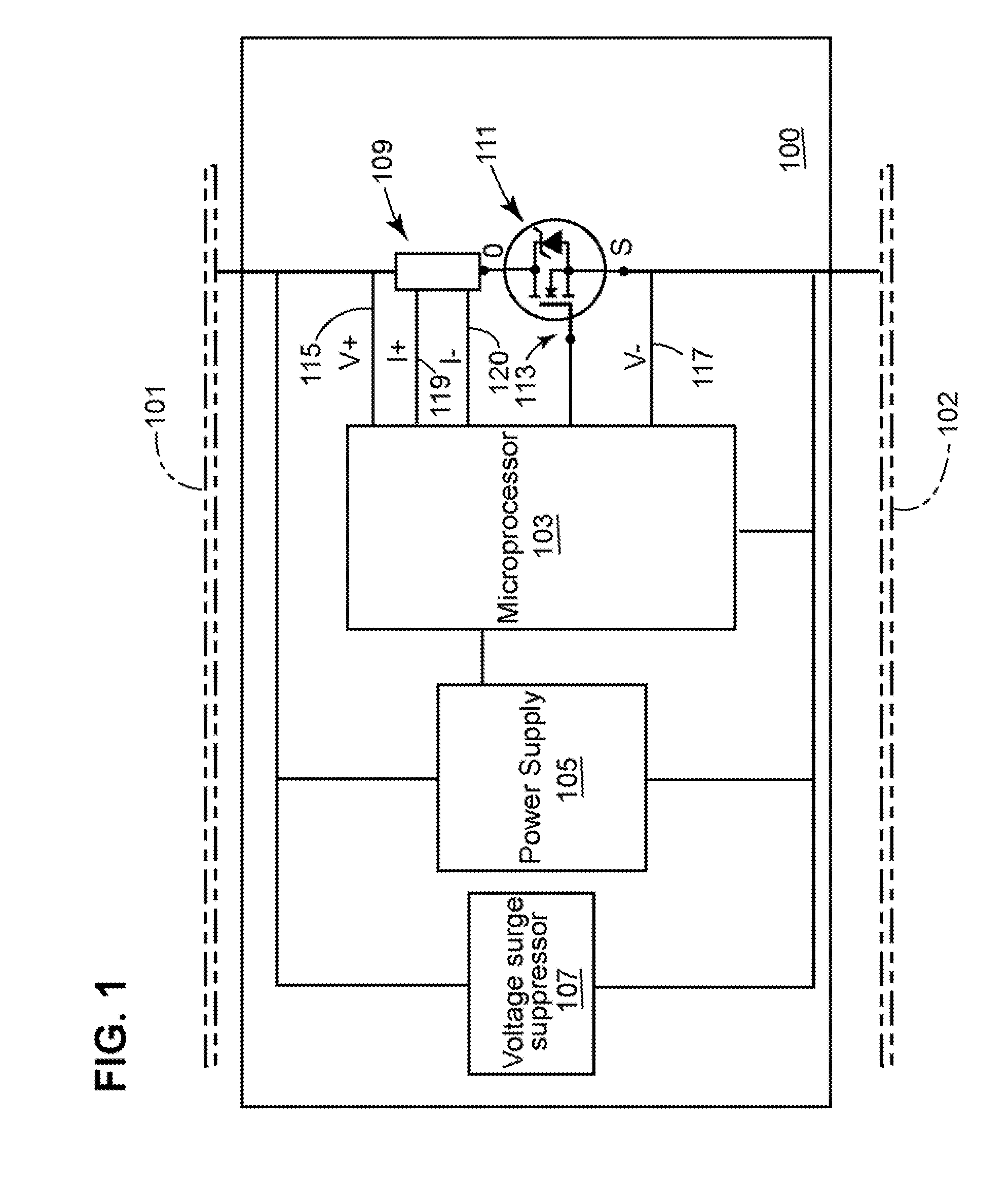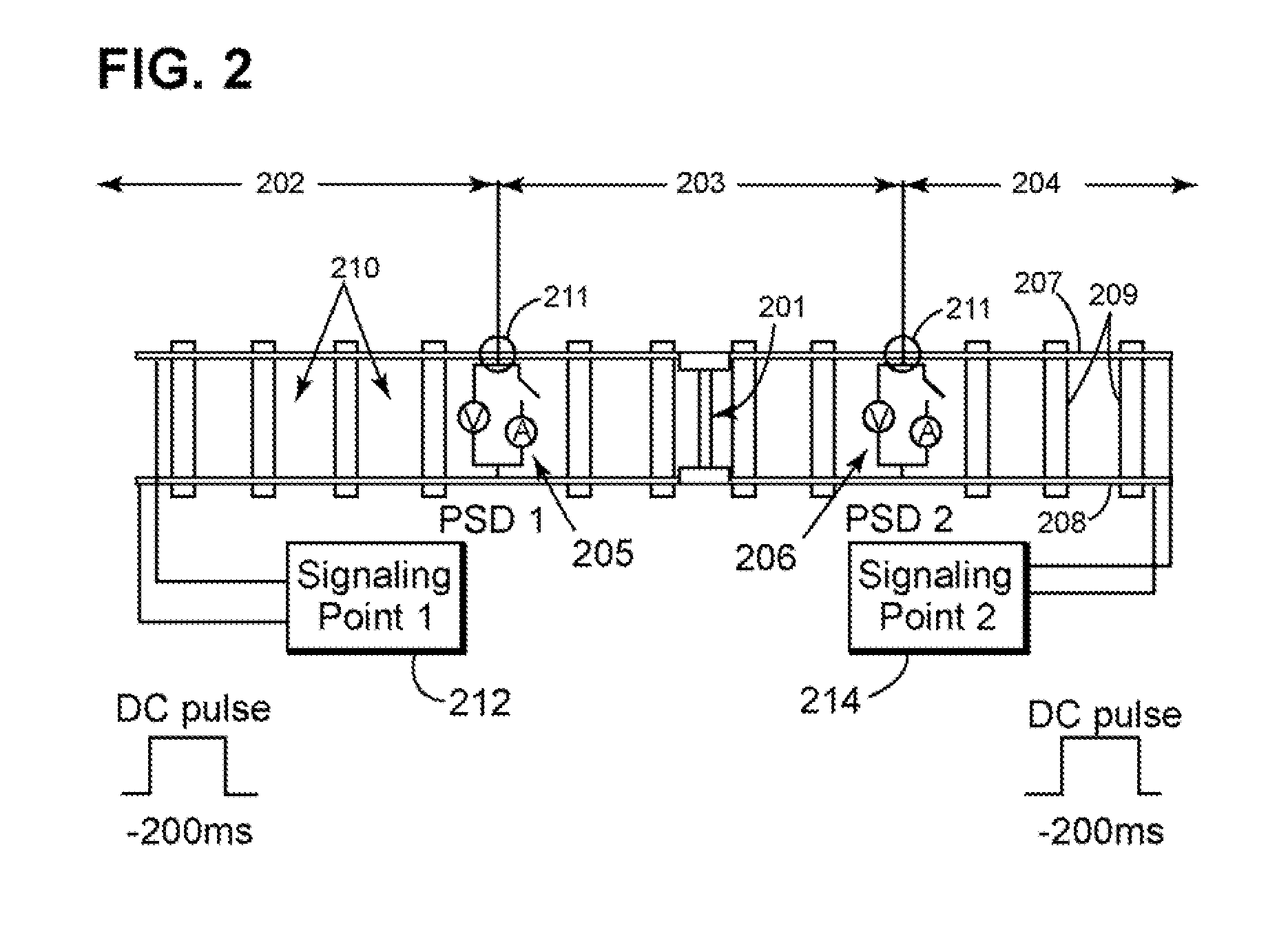Methods and system for jointless track circuits using passive signaling
a jointless track and passive signaling technology, applied in the direction of railway signalling, railway signalling and safety, railway components, etc., can solve the problems of low cost of installation and maintenance of electrically insulating materials, limited distance between signaling points, and attenuation of an applied voltage between rails, so as to improve the communication range of data and low cost
- Summary
- Abstract
- Description
- Claims
- Application Information
AI Technical Summary
Benefits of technology
Problems solved by technology
Method used
Image
Examples
Embodiment Construction
[0027]FIG. 1 is a diagram of a new passive signaling device (“PSD”) 100 configured configured to detect a presence of a train or a presence of a broken rail within a predetermined section (e.g., block) of railroad track (hereinafter “track”). The PSD 100 may also be configured to communicate track data to a signaling point. Track data includes, but is not limited to: data indicating a train is present within a predetermined block of track; data indicating a train is not present within the predetermined block of track; data indicating a train is approaching or receding from a PSD; data indicating a rail (or rails) within the predetermined block of track has a break; and data indicating there are no breaks with the rail (or rails) within the predetermined block of track.
[0028]Referring to FIG. 1, a PSD may include a low-power control device 103, a power supply105, a voltage surge protector 107, a current sensor 109, and a PSD switch 111. The control device 103 may be any suitable type...
PUM
 Login to View More
Login to View More Abstract
Description
Claims
Application Information
 Login to View More
Login to View More - R&D
- Intellectual Property
- Life Sciences
- Materials
- Tech Scout
- Unparalleled Data Quality
- Higher Quality Content
- 60% Fewer Hallucinations
Browse by: Latest US Patents, China's latest patents, Technical Efficacy Thesaurus, Application Domain, Technology Topic, Popular Technical Reports.
© 2025 PatSnap. All rights reserved.Legal|Privacy policy|Modern Slavery Act Transparency Statement|Sitemap|About US| Contact US: help@patsnap.com



